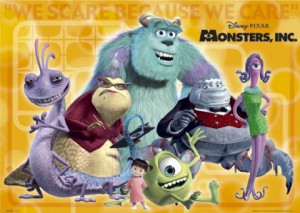Instant Lead Generation: The Structure of an Effective Case Study
We all want to write about our successful exploits so potential customers may learn from what our established customers have experienced. The problem is we often lack the most effective way to get our message out. We also fall prey to the inability to explain the impact, results and ROI so value is immediately understood and ROI is instantly perceived.
Following the Matrix Case Study Structure will ensure your potential customers understand the “story” while also realizing the TRUE ECONOMIC effect of your solution.
1) State the Business Problem in plain language, the simpler to understand the better. Stay away from clever turn’s of phrase or industry specific vernacular (words like vernacular for example).
2) The Consequence of not fixing the problem MUST be stated ASAP, if not the question in the reader’s mind is “Why am I wasting my time?”
3) The Reward of the fixing problem must be stated IMMEDIATELY after the Consequence. Readers are tuned to radio station WII FM “What’s In It For Me?”
4) Explain the specific results the customer received as a by product of the implementation, making sure you “speak” in dollars and performance as well as systematic/procedural improvements.
5) Discuss any business lessons learned through the prism of explaining the solution. Don’t leave out any “warts” in the implementation. This level of disclosure will establish trust regarding you personally and your results.
6) Wrap up with a CURRENT snapshot as to how well the current customer is doing (complete with dollar and systematic/procedural updates) or with a simple conclusion of the experience.
Some folks LOVE the Call to Action Premise, “If these are the types of issues you face and results you want please contact us at…” I tend to NOT use them because they are obvious. You should always be following up TELE-PHONICALLY when you are aware of somebody requesting/downloading etc., a case study so a call to action is moot if you are ON your game.
Each contact you make should be progressing the relationship just don’t forget to ask for feedback about the case study. If they were not compelled to contact you by its presentation why not? What can you do differently? What are they looking for? Be responsive and listen to your customers and potential customers. Make your tweaks, rinse and repeat and start counting your cash….
Everything I Ever Needed to Know About Sales I Learned From the Movies: Monsters, Inc.
3 Sales Management Lessons From
The Power of Practice
We all think we are sooooo great! Just wind us up, do a little preparation and let’s go talk to customers. Well the scary characters in Monsters, Inc. would tell you different. Scaring is critically important in their world because the “screams” that come from the children they scare power their city, lights, heat, cars you name it.
The first scene in the movie shows their training area where they practice “scaring.” They have a replica child’s room complete with a “little boy” robot. One of the “professional scarers” comes out of the closet to scare the little boy and he makes some serious mistakes. It is prime learning time for the all monsters on the team because they video tape the simulations. Now they can go back and coach/correct all the mistakes. It helps the individual monster making the mistakes and all the other monsters on the team.
Sound familiar? Folks you are making a gravely serious mistake if you do not conduct simulations with your team. Make them as real to life as you possibly can. Video tape them so you can document progress or regression. Make the simulations part of your weekly/monthly/quarterly sales meetings. Make them fun, have contests around them. But most of all DO THEM!
You should also practice presentations with every rep individually. Don’t leave anything to chance. Give your rep the best shot possible by running through the discovery/presentation/negotiation with them BEFORE they go to it. George Patton, one of our greatest generals of all time, said “Sure I am tough on them during training! I much rather they sweat with me than bleed on the battle field.” Well, I rather my sales people learn in an office from me so they are prepared to get the sale, than by learning a lesson with a client and losing the sale.
The Power of Naming
About half-way through the movie there is a scene where the two main characters, Sully and Mike, are trying to send home the little girl who snuck into the Monster’s world. They are arguing about how to do it when Sully says that he has named her “Boo.” Well Mike is just livid at this development and he says, in a very angry voice, “You named it? You can’t name it; once you name it you get attached to it.” Exactly, once we take the time and effort to name something we begin to place value on that something. It is the reason why I tell all my clients that they should name their proposals.
What is special about an ‘Investment Analysis for ABC Company’ or what about ‘A Proposal for Electronic Payment Services Prepared by Joe Smith Company’? Answer: NOTHING. Both sound as generic as the proposal inside, I would wager. That is why I am amazed when sales management does not make formally naming proposals an air tight rule for every proposal that goes out the door.
The proposal is supposed to be a professional selling document not a glorified descriptive invoice. NAME YOUR PROPOSAL based on what the prospect wants as a RESULT of buying your products and services. A couple of examples I have used:
- “How to Improve your Sales Team While Increasing Sales Revenue”
- “Increase the Productivity of your Customer Service Team and Watch your Sales Soar”
- “Creating a Lead Generation System that Produces an Ongoing Stream of Quality, Qualified Leads”
Each one of the above Proposal Names tell the prospect EXACTLY what to expect from reading the proposal but more importantly each name tells THE VALUE that comes from implementing what is inside the proposal.
The Power of Laughter
Remember when I told you that a child’s scream was the source for power in Monster City? Well by the end of the movie Sully and Mike learn that laughter is 10 times more powerful than a scream so they completely re-engineer Monsters, Inc. Now each monster who visits a child’s room has to make the children laugh instead of scream and the result is a record breaking year for energy production.
Managers, find a way to make sales fun for your team. Have contests, pit individuals against each other, get your team to volunteer for community events or hold them yourself and ALWAYS celebrate victories with your team. Take them out for cocktails or dinner or both, take them bowling, take them to an amusement park, it doesn’t matter what you do, the effort here COUNTS, but try to have fun with your team.
I know you need to maintain a certain professional distance from the team. If you get too close it can cloud your judgment or worse cost you a great sales person or a big sale. I am also aware there is always going to be the need to be tough with your team. There will also always be the need to place corrective actions on 1 or more members of your team. That’s fine just don’t let your managerial brio get in the way of having your team enjoy themselves.
Remember laughter is 10 times more powerful than screams keep that ratio in mind and you will be amazed at the results.
Relationships, Slips and Dips
I was at a customer’s last week starting to dig into the Strategy Module for a S.I.T. Blitz we will be conducting the 2nd week in September. Working with the salespeople, we always go through a series of questions to understand their perception of the suspect/prospect/customer (SPC) dynamic which is so crucial when planning for a successful S.I.T. Blitz.
One of the key factors is knowing their standard for SPC communication in terms of frequency. During the course of questions one salesperson chimed in and said “I keep in touch with my suspects and prospects 2x a year, any more than that and I think it would appear pushy.”
Well after the black cloud and threat of lighting inside the building passed I asked him how often does he talk to his best friend? He said probably 2 times a week. Then I asked how often did he call his wife when they were dating? He said minimum 4 times a week. Then I asked him if he considered his relationships with his contacts as solid and he said yes, emphatically, I might add.
So I think you know where I was going with this line of questioning. My final question to him was how many times has he called one of his contacts only to find out that his contact person wasn’t there or there had been a drastic change in the company. His answer “John, more times than I can count,” and therein lies the ‘problemo’ my sales friend.
Believe it or not this happens to me about once a month; a salesperson who understands staying in touch with friends or girlfriends, but doesn’t have a clue what it takes to maintain a successful business relationship. Strangely enough, these same sales people will argue, ‘till blue in the face, they have a good feel for their customers.
I call the first level of this problem Relation-Slip behavior. The sales person “thinks” they know how to stay in touch with a contact. The problem is what they “thinks” has nothing to do with the facts, needs and wants of the suspect/prospect/customer so what winds up happening is a deepening chasm develops between sales and contact with sales being quite oblivious to it. There is a ALWAYS correlation with a drop in sales but the sales person is stuck scratching their head and wondering why this is happening to him.
The next level DOWN is Relation-Dip behavior. The sales person here doesn’t have a clue how to stay in touch with their contacts. They will never admit they have a problem, so they go the other direction and MINIMIZE contact to the point of neglect. You see, in their mind, by not “bugging them” they are maintaining a good relationship. These sales people are so afraid of experiencing the UGH Factor that they will stay away from the suspect/prospect/customer. My question is “If you stay away for long periods of time how will you know when they have become a ripe prospect?” Insert collective silence or righteous indignation ‘here. Then you add the precipitous drop in sales and you have yourself a major issue.
Like any problem in sales early recognition is key. If you are a sales manager WAKEUP! You should be tracking not just their sales production but their lead generation activities. Either one should give you enough of an alert to intervene before the behavior jeopardizes their career and your quota attainment.
If you are a sales person WAKEUP! Your sales are down! Either you don’t spend enough time staying in touch with your customers or you are doing the absolute WRONG things. You have to be self aware enough to say “I have to change what I am doing or this sucker is going down!”
All righty then…. that’s it for today! Next post I will be talking about the solution to Relation-Slips and Dips and the changing nature of the sales contact process.
Until then remember “You can either make sales or you can make excuses but you can’t do both…” I’m outta here!
If you want more information about the S.I.T. Blitz and how you can have a “revenue raining, climate change” experience at your please call Matrix at 216 347 6729 or go to buildyoursalesmachine.com for more details!
Archives
- May 2018
- November 2016
- June 2016
- April 2016
- March 2016
- February 2016
- January 2016
- February 2012
- January 2012
- December 2011
- October 2011
- August 2011
- July 2011
- June 2011
- May 2011
- April 2011
- March 2011
- February 2011
- July 2009
- June 2009
- May 2009
- August 2008
- June 2008
- May 2008
- April 2008
Categories
- A-Players
- Best Practice
- Change
- Cold Call
- Communication Skills
- Continual Development
- Critique Session
- Customer
- D.I.G.
- Drive
- Firing
- Guts
- Handling criticism
- Hiring and Assessment
- Hiring Dashboard
- Human Resources
- Intelligence
- interview questions
- Interviewing
- interviewing sales superstars
- Lead Generation
- Leads
- Motivation
- Naturally Curious
- New Contact Touches
- Position Contracts
- Proposals That Sell
- Prospects
- Reference Checks
- S.I.T. Blitz
- S.I.T. Nurture Prospecting System
- S.I.T. Touch
- Sales 3.0
- Sales Blitz
- Sales Management
- Sales Superstars
- Simulations
- Skill Sets
- Staffing
- Suspect/Prospect/ Customer Dynamic
- Suspects
- Talent and Traits
- Termination
- Uncategorized








